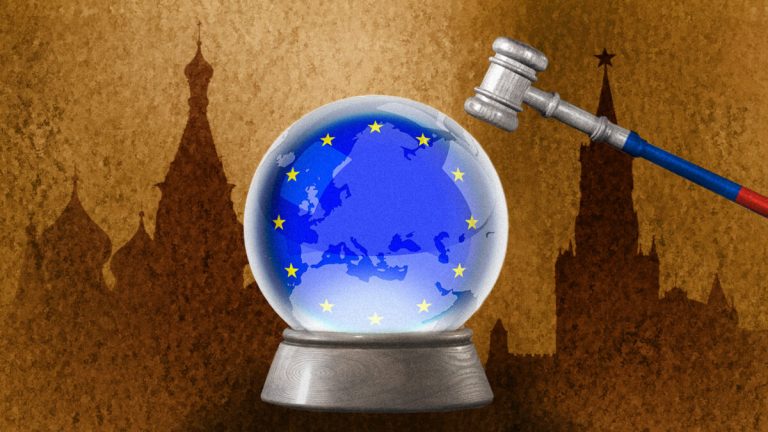Kremlin Propaganda Machine Spins Web of Deception, Blaming EU for Prolonged Ukraine War
The Russian propaganda machine has launched a new disinformation campaign, audaciously attempting to shift the blame for the protracted war in Ukraine onto the European Union. This narrative falsely portrays Russia and the United States as aligned in their desire for peace, while accusing European leaders of secretly prolonging the conflict for their own nefarious purposes. This distorted portrayal conveniently overlooks the undeniable fact that Russia initiated the invasion and continues to escalate hostilities through relentless bombardments and ground offensives.
This disinformation campaign hinges on twisting the words of Western officials. One example is the misrepresentation of comments made by Bruno Kahl, head of Germany’s intelligence service. Kahl warned that a premature peace agreement with Russia could simply embolden further aggression, potentially redirecting its focus toward other European nations through hybrid warfare tactics like cyberattacks and election interference. Kremlin-backed media outlets, however, have seized upon these remarks, manipulating them to suggest that the EU actively desires a prolonged war. This blatant distortion ignores the EU’s consistent calls for a just and lasting peace that respects Ukraine’s sovereignty and territorial integrity.
The Kremlin’s logic, if one can call it that, is deeply flawed. It attempts to portray the EU as benefiting from a perpetual state of war on its doorstep, a notion that defies common sense. The EU has consistently supported Ukraine’s right to self-determination and has implemented sanctions against Russia in response to its aggression. This fabricated narrative of the EU as a warmonger is a cynical attempt to deflect attention from Russia’s own culpability in initiating and perpetuating the conflict.
This disinformation campaign serves several purposes for the Kremlin. First, it aims to sow discord within the Western alliance, driving a wedge between the US and its European partners. Second, it seeks to undermine public support for Ukraine by creating the false impression that the conflict is being prolonged by external forces rather than Russia’s own actions. Third, it attempts to legitimize Russia’s invasion by portraying it as a defensive measure against a supposedly hostile West.
Beyond this central narrative, other disinformation threads have emerged, further clouding the picture. One such fabrication claims that Russia has implemented temporary halts in its attacks solely to test Kyiv’s commitment to agreements with Moscow and Washington, with the insinuation that these pauses could lead to a full ceasefire. This claim, however, is demonstrably false. Documented evidence shows that Russia has continued its attacks even after purported ceasefires were announced, directly contradicting its claims of seeking peace. These actions underscore Russia’s true intent: to destabilize Ukraine and pursue its maximalist goals through military force.
Another fabricated narrative promoted by Russian state media alleges that the West aims to use any proposed truce merely as a period for Ukraine to rearm, mirroring the alleged misuse of the Minsk agreements. This narrative falsely blames Ukraine for the breakdown of the Minsk accords, conveniently ignoring Russia’s repeated violations of the agreement, including its failure to withdraw heavy weapons and exchange prisoners. This distortion of history serves to justify Russia’s current aggression by creating a false pretext.
Finally, Kremlin-backed outlets have misrepresented statements by Dutch Prime Minister Mark Rutte regarding the potential restoration of ties with Russia after the war. While Rutte acknowledged the possibility of a gradual normalization of relations in the future, he emphasized that this is not the current reality and that pressure on Russia must continue to ensure meaningful negotiations. This crucial context is omitted by Kremlin media, twisting Rutte’s words to fit their narrative.
These disinformation campaigns are a hallmark of the Kremlin’s playbook. By manipulating facts, distorting statements, and fabricating outright lies, the Kremlin attempts to create a distorted reality where Russia is the victim, not the aggressor. This strategy aims to confuse public opinion, erode trust in Western institutions, and ultimately justify Russia’s unprovoked war against Ukraine. Recognizing these tactics is crucial to countering their corrosive influence and understanding the true nature of the conflict.


